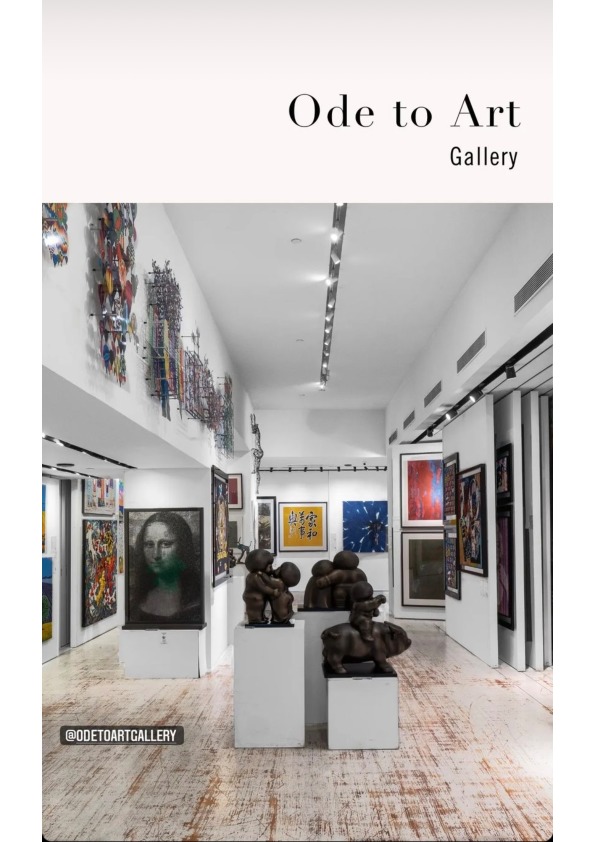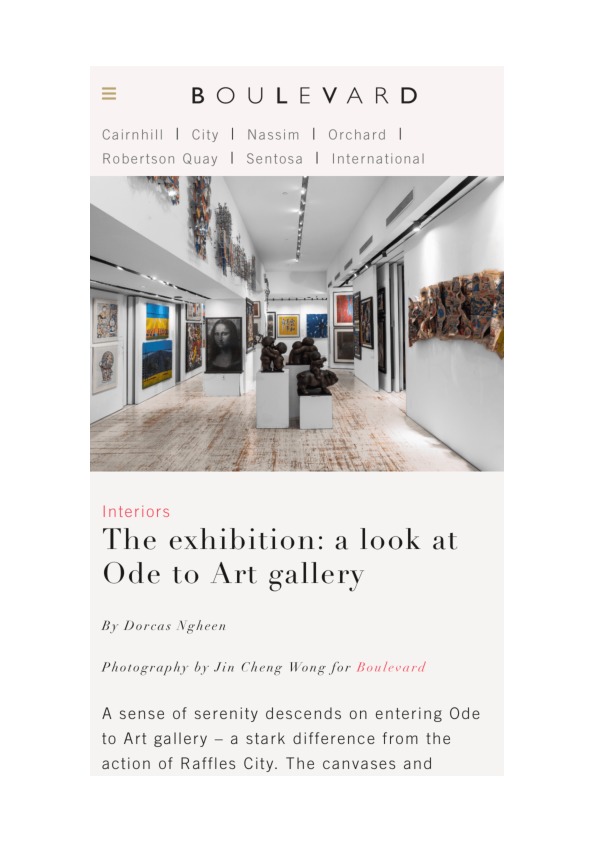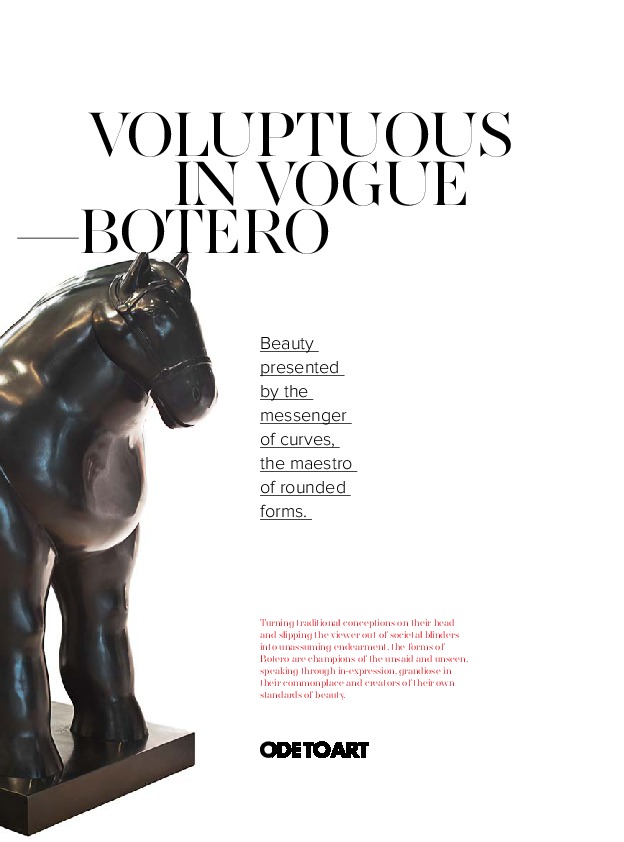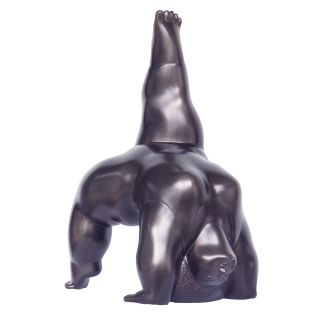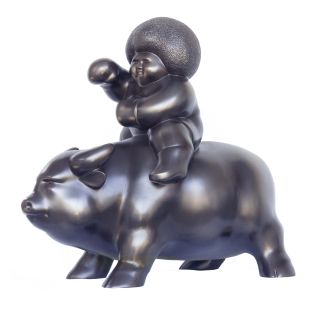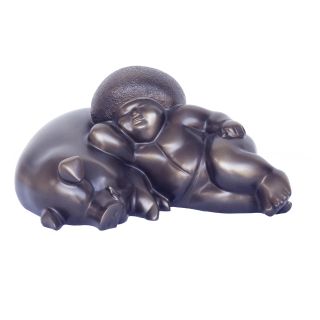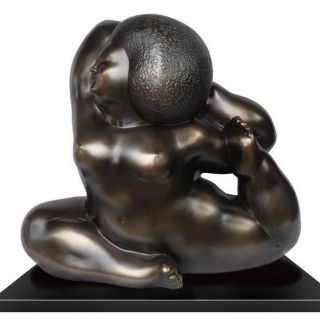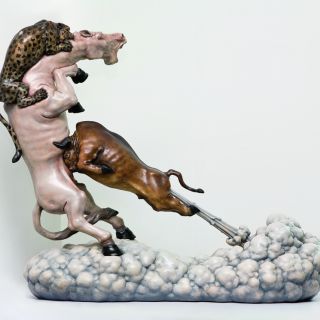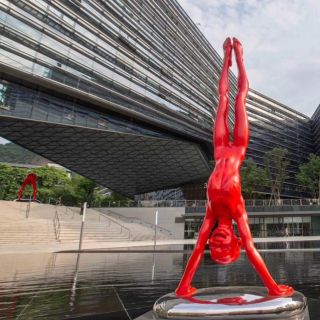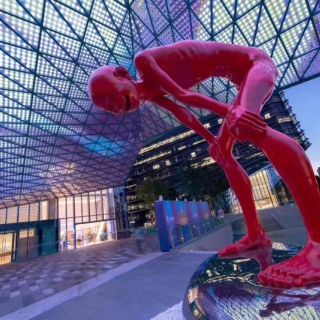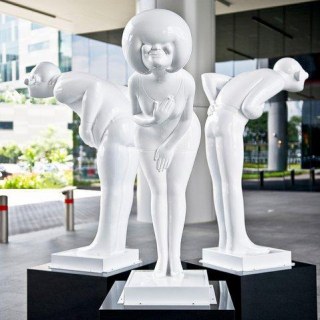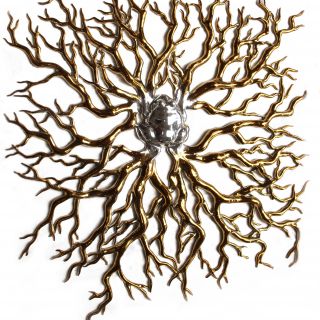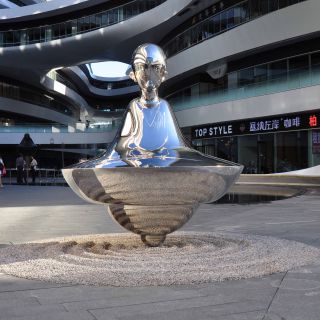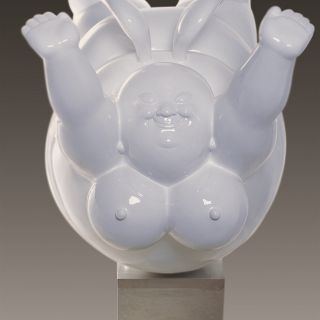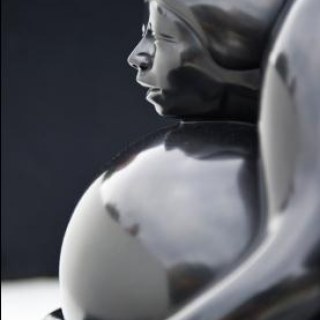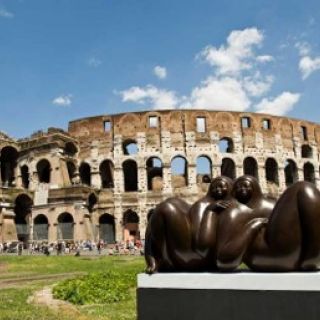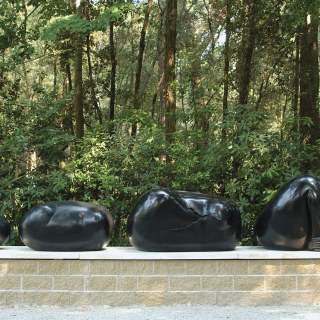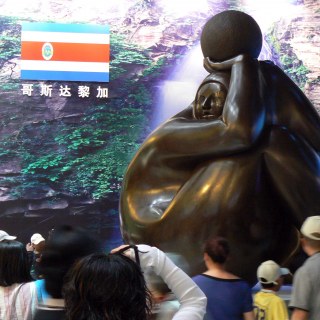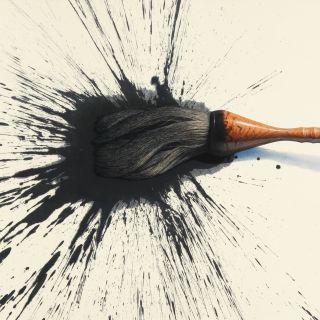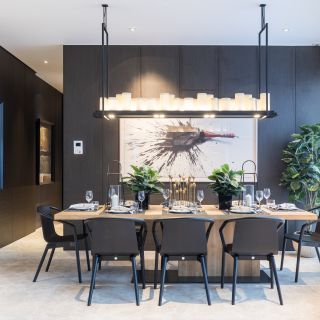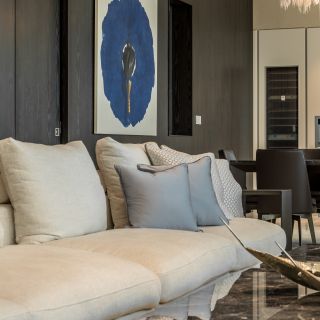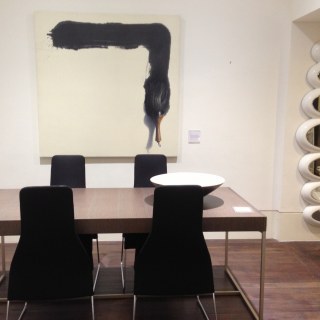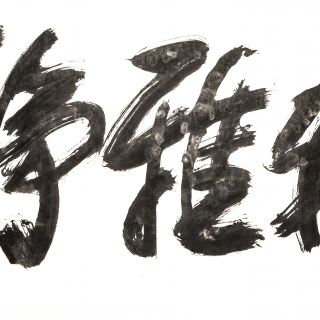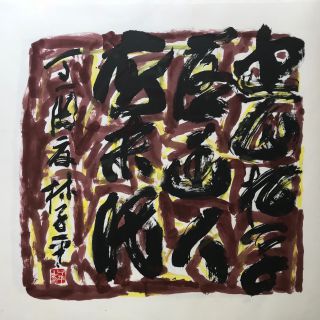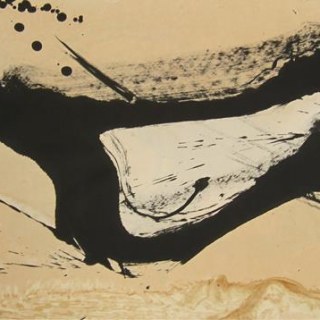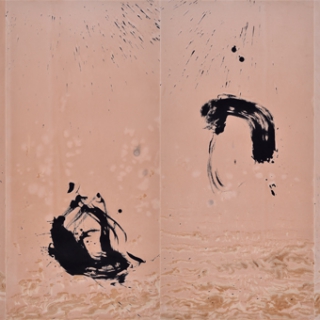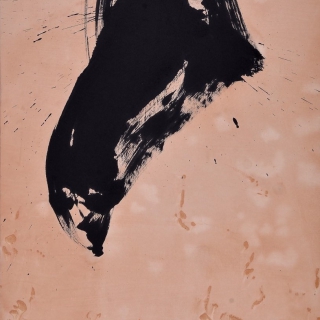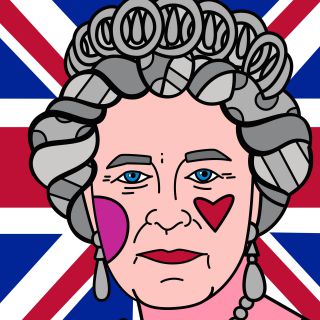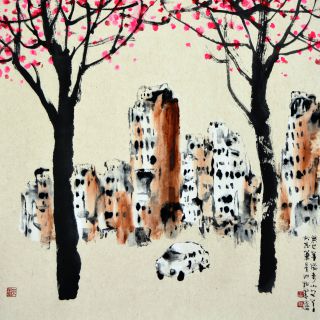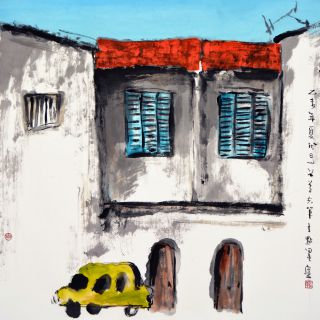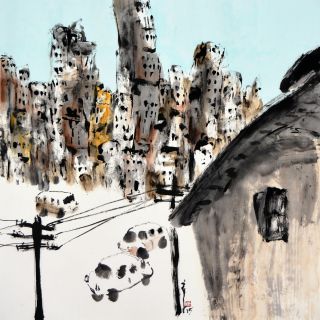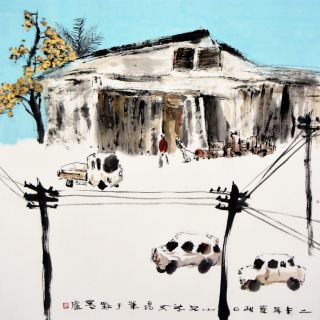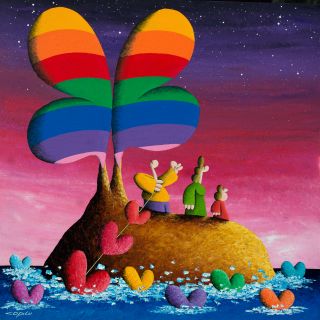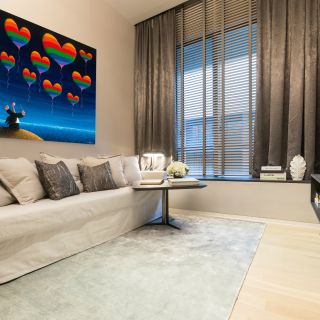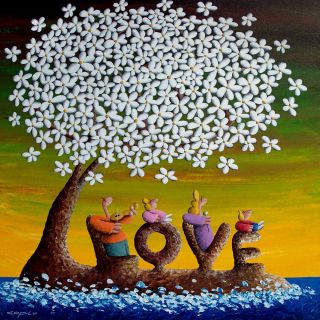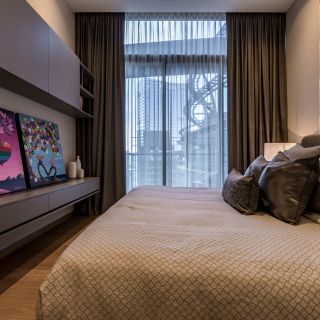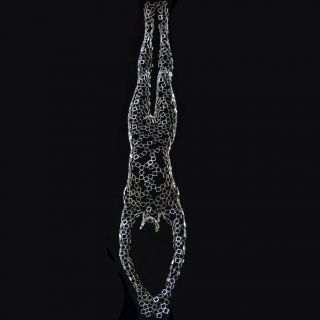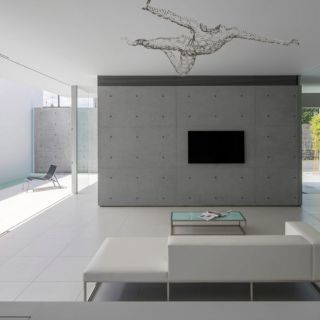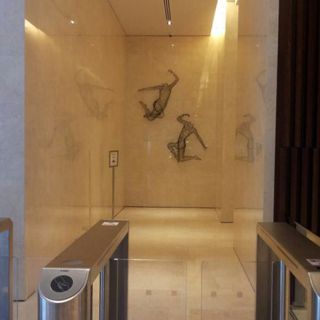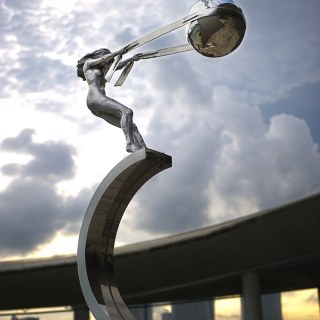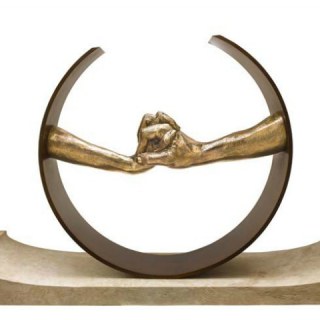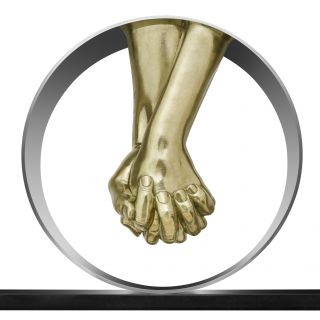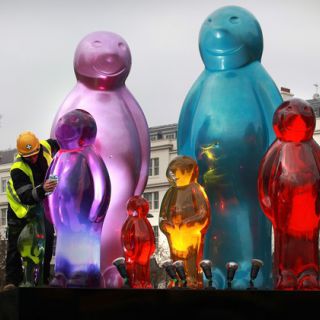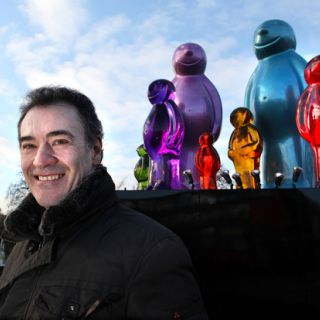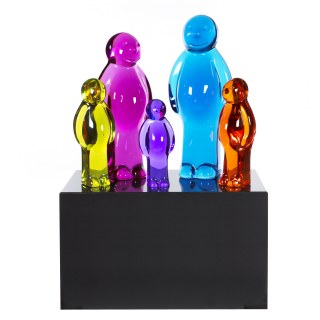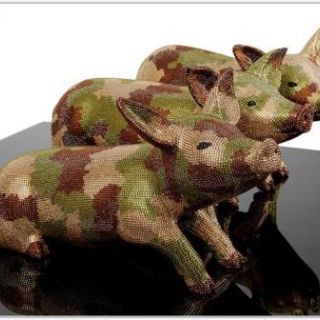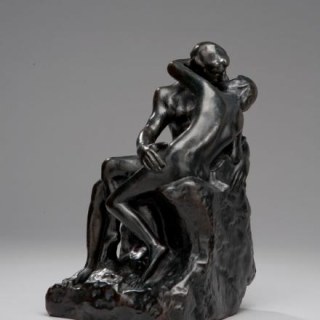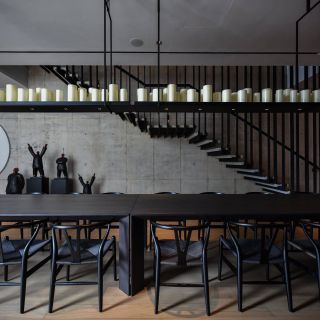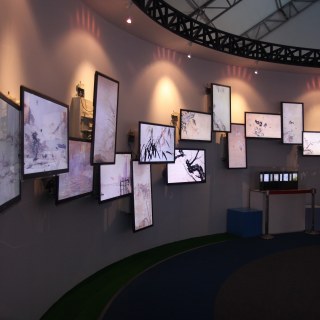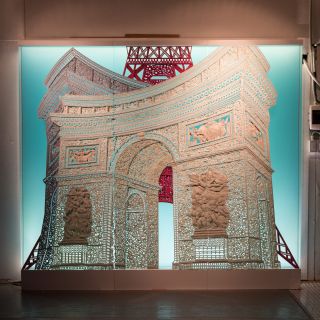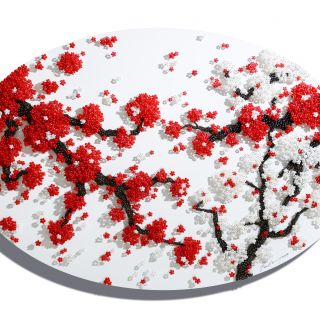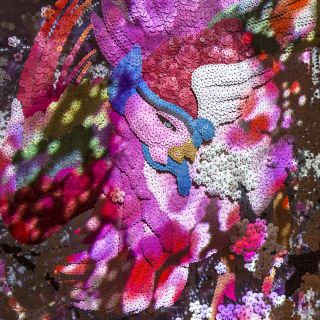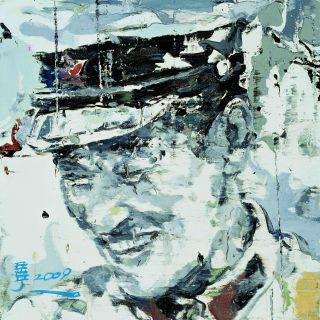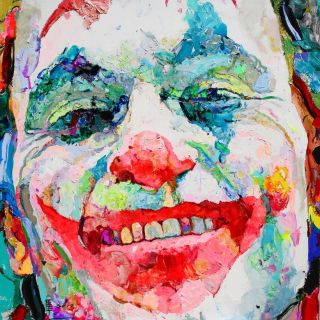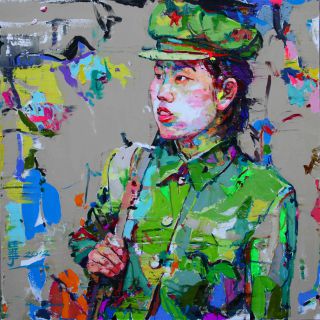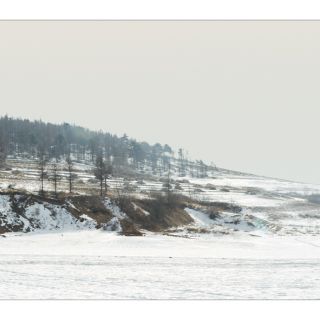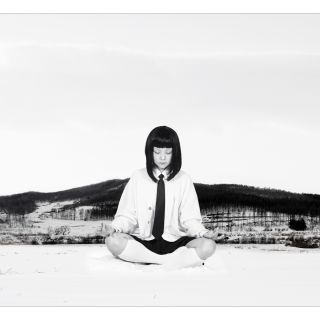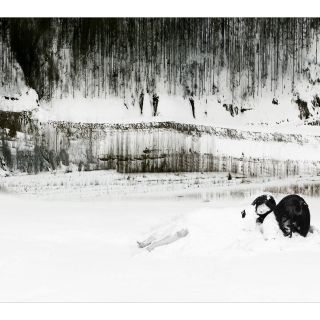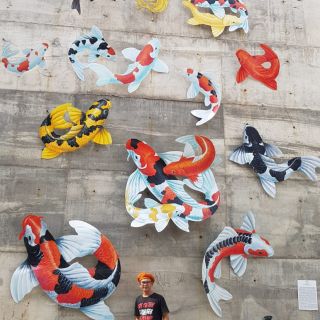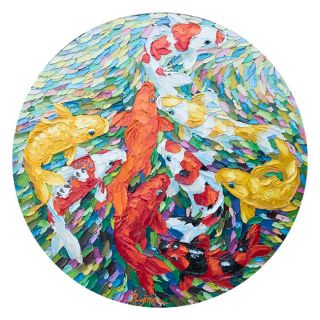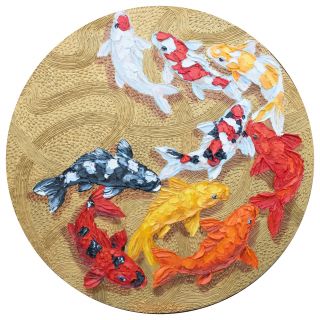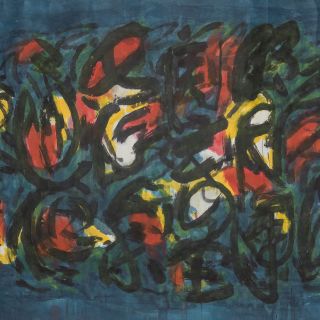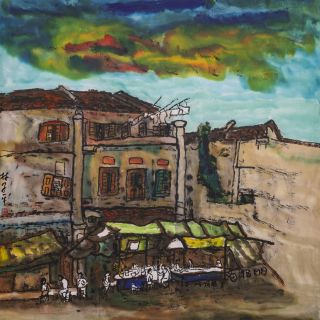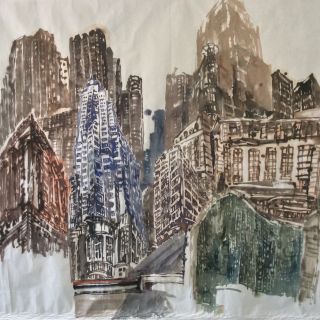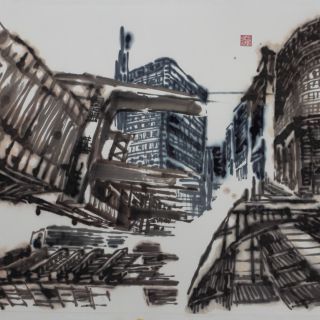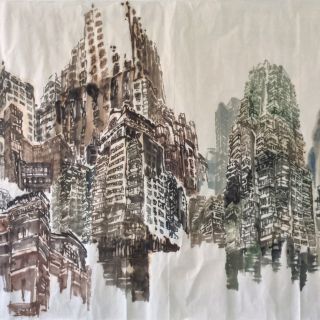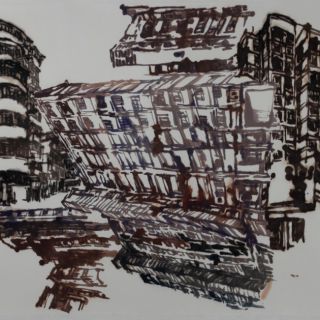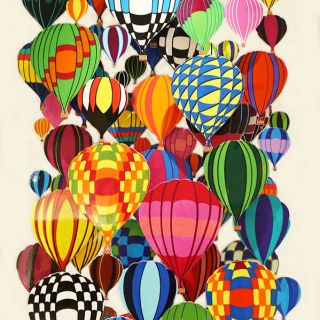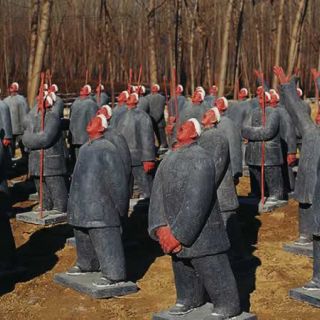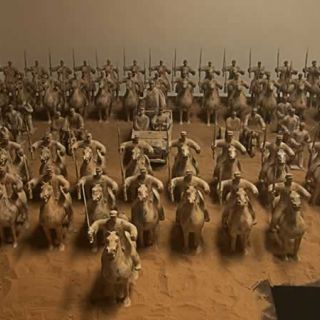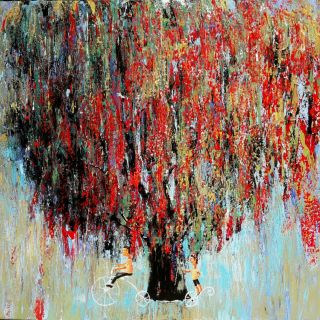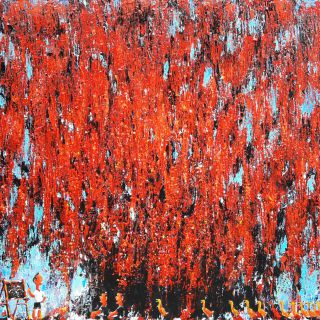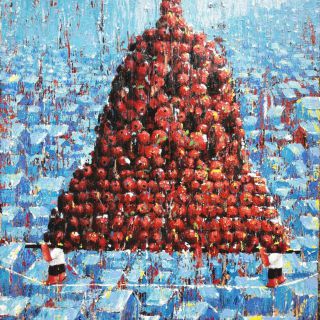
Born in 1932 in Medellin, Colombia, Fernando Botero is an artistic living legend of our times. A prolific artist and creator of the signature style ‘Boterismo’, the artist’s rounded musings have made him a global figure in the contemporary art world, and the artistic ambassador of Colombian pursuit. Rounded from convention, distinctive in spite of the commonplace, and tied to Colombian history and heritage - his curvaceous forms have reached monumental heights, and are collected by major museums, corporations and private collectors all over the world, including the United States, Korea, and Mexico City, to name a few.
Viewing 3 works by Fernando Botero
Sort
Videos 
Videos

How To Collect Art For Your Home - Tatler x Ode To Art
Lee Jung Woong, Fernando Botero, Lim Tze Peng, Dedy Sufriadi
Publications 
Publications
Biography 
Biography
Born in 1932 in Medellin, Colombia, Fernando Botero is an artistic living legend of our times. A prolific artist and creator of the signature style ‘Boterismo’, the artist’s rounded musings have made him a global figure in the contemporary art world, and the artistic ambassador of Colombian pursuit. Rounded from convention, distinctive in spite of the commonplace, and tied to Colombian history and heritage - his curvaceous forms have reached monumental heights, and are collected by major museums, corporations and private collectors all over the world, including the United States, Korea, and Mexico City, to name a few.
Debuting in the artistic scene in 1948 when he was just 16 years old, Botero studied painting in Madrid and was influenced by the artworks of Francisco de Goya and Diego Velázquez. He had his first exhibition in 1948 and first solo exhibition two years later. Self-titled "the most Colombian of Colombian artists" early on, he came to national prominence when he won the first prize at the Salón de Artistas Colombianos in 1958. Throughout the 1950s, Botero experimented with proportion and size, and he began developing his trademark style—round, bloated humans and animals—after he moved to New York City in 1960. The inflated proportions of his figures, including those in Presidential Family (1967), suggest an element of political satire, and are depicted using flat, bright color and prominently outlined forms—a testament to Latin-American folk art. While the artist's works include still-lifes and landscapes, his most popular works are his emblematic situational portraitures.
After reaching an international audience with his art, Botero moved to Paris in 1973, where he began creating sculptures. These works extended the foundational themes of his painting, as he again focused on his bloated subjects. As his sculpture developed, by the 1990s, outdoor exhibitions of his huge bronze figures were staged around the world to great success. In 2004 Botero exhibited a series of 27 drawings and 23 paintings dealing with the violence in Colombia from the drug cartels. He donated the works to the National Museum of Colombia, where they were first exhibited. In 2005, Botero gained considerable attention for his Abu Ghraib series, which was exhibited first in Europe. He based the works on reports of United States forces' abuses of prisoners at Abu Ghraib prison during the Iraq War. Beginning with an idea he had on a plane journey, Botero produced more than 85 paintings and 100 drawings in exploring this concept and "painting out the poison". The series was exhibited at two United States locations in 2007, including Washington, DC. Botero said he would not sell any of the works, but would donate them to museums. In 2006, after having focused exclusively on the Abu Ghraib series for over 14 months, Botero returned to the themes of his early life such as the family and maternity. In his Une Famille, Botero represented the Colombian family, a subject often painted in the seventies and eighties. In his Maternity, Botero repeated a composition he already painted in 2003, being able to evoke a sensuous velvety texture that lends it a special appeal and testifies to personal involvement of the artist. The child in the 2006 drawing has a wound in his right chest as if the artist wanted to identify him with Jesus Christ, thus giving it a religious meaning that was absent in the 2003 artwork. In 2008, he exhibited the works of his The Circus collection, featuring 20 works in oil and watercolor.
In a 2010 interview, Botero said that he was ready for other subjects: "After all this, I always return to the simplest things: still lifes." His works feature a figurative style, known as "Boterismo", giving them an unmistakable identity. Botero depicts women, men, daily life, historical events and characters, milestones of art, still-life, animals and the natural world in general, with exaggerated and disproportionate volumetry, accompanied by fine details of scathing criticism, irony, humor, and ingenuity. His paintings and sculptures are united by their proportionally exaggerated or "fat" figures, as he once referred to them. Botero is an abstract artist in the most fundamental sense, choosing colors, shapes, and proportions based on intuitive aesthetic thinking. Though he spends only one month a year in Colombia, he considers himself the "most Colombian artist living" due to his insulation from the international trends of the art world. In the last three decades, he has achieved international recognition for his paintings, drawings and sculpture, with exhibitions across the world. His art is now widely known as a key part of the makings of modern contemporary art history.
Public Collections
Cafesjian Center for the Arts, Yerevan, Armenia
National Museum of Colombia, Bogotá, Colombia
University of California, Berkeley, California, United States
Israel Museum, Jerusalem, Israel
Hanover Museum of Art, Dartmouth College, Hanover, New Hampshire, United States
Museo de Arte Moderno, Bogotá, Colombia
Wallraf-Richartz-Museum, Cologne, Germany
Edwin A. Ulrich Museum of Art, Wichita State University, Wichita, Kansas, United States
Tokushima Modern Art Museum, Tokushima, Japan
The State Hermitage Museum, St. Petersburg, Russia
Tel Aviv Museum of Art, Tel Aviv, Isreal
Staatgalerie Moderne Kunst, Munich, Germany
Sonje Museum of Contemporary Art, Kyungju, South Korea
Setagaya Art Museum, Tokyo, Japan
Pushkin Museum, Moscow, Russia
Ponce Museum of Art, Ponce, Puerto Rico
Niigata Prefectoral Modern Art Museum, Niigata, Japan
New Orleans Museum of Art, New Orleans, Louisiana, United States
Neue Pinakothek, Munich, Germany
The Museum of Modern Art, Saitama, Japan
The Museum of Modern Art, New York, New York, United States
Museum Moderne Kunst, Vienna, Austria
Museum of Art, The Rhode Island School of Design, Providence, Rhode Island, United States
Museum of Art, Pennsylvania State University, University Park, Pennsylvania, United States
Museo Nacional de Bellas Artes, Santiago, Chile
Museo Nacional, Bogotá, Colombia
Museo de Bellas Artes, Caracas, Venezuela
Yamanashi Prefectural Museum of Art, Yamanashi, japan
Museo de Arte Contemporaneo de Caracas, Caracas, Venezuela
Museo de Antioquia, Medellín, Colombia
Museo d’Arte Moderna del Vaticano, Rome, Italy
Miyagi Museum of Art, Miyagi, Japan
Milwaukee Art Museum, Milwaukee, Wisconsin, United States
M.H.K. Foundation, Milwaukee, Wisconsin, United States
The Metropolitan Museum of Art, New York, New York, United States
Meadow Brook Art Gallery, Oakland University, Rochester, Michigan, United States
Lowe Art Museum, University of Miami, Coral Gables, Florida, United States
Kunsthalle Nuremberg, Nuremberg, Germany
Hood Museum of Art, Dartmouth College, Hanover, New Hampshire, United States
Ho-am Museum, Seoul, South Korea
Hirshhorn Museum and Sculpture Garden, Smithsonian Institution, Washington, D.C., United States
Hiroshima City Museum of Contemporary Art, Hiroshima, Japan
Guild Hall Museum, East Hampton, New York, United States
The Solomon R. Guggenheim Museum, New York, New York, United States
The Grey Art Gallery and Study Center, New York University Art Collection, New York, New York, United States
Gramercy Park Hotel, New York, New York, United States
Gelerie-Verein, Munich, Germany
Fondation Veranneman, Kruishoutem, Belgium
Donación Fernando Botero, Coleccion Banco de la Republica, Santa Fe de Bogotá, Colombia
Colección Fernando Botero, Fundacion Santander Central Hispano, Medellin, Colombia
Collezione d’Arte Religiosa Moderna, Monumenti, Musei e Gallerie Pontificie, Vatican City, Italy
Birmingham Museum of Art, Birmingham, Alabama, United States
The Baltimore Museum of Art, Baltimore, Maryland, United States
Ateneumin Taidemuseo, Helsinki, Finland
Astrup Museum, Oslo, Norway
Archer M. Huntington Art Gallery, University of Texas at Austin, Austin, Texas, United States
Debuting in the artistic scene in 1948 when he was just 16 years old, Botero studied painting in Madrid and was influenced by the artworks of Francisco de Goya and Diego Velázquez. He had his first exhibition in 1948 and first solo exhibition two years later. Self-titled "the most Colombian of Colombian artists" early on, he came to national prominence when he won the first prize at the Salón de Artistas Colombianos in 1958. Throughout the 1950s, Botero experimented with proportion and size, and he began developing his trademark style—round, bloated humans and animals—after he moved to New York City in 1960. The inflated proportions of his figures, including those in Presidential Family (1967), suggest an element of political satire, and are depicted using flat, bright color and prominently outlined forms—a testament to Latin-American folk art. While the artist's works include still-lifes and landscapes, his most popular works are his emblematic situational portraitures.
After reaching an international audience with his art, Botero moved to Paris in 1973, where he began creating sculptures. These works extended the foundational themes of his painting, as he again focused on his bloated subjects. As his sculpture developed, by the 1990s, outdoor exhibitions of his huge bronze figures were staged around the world to great success. In 2004 Botero exhibited a series of 27 drawings and 23 paintings dealing with the violence in Colombia from the drug cartels. He donated the works to the National Museum of Colombia, where they were first exhibited. In 2005, Botero gained considerable attention for his Abu Ghraib series, which was exhibited first in Europe. He based the works on reports of United States forces' abuses of prisoners at Abu Ghraib prison during the Iraq War. Beginning with an idea he had on a plane journey, Botero produced more than 85 paintings and 100 drawings in exploring this concept and "painting out the poison". The series was exhibited at two United States locations in 2007, including Washington, DC. Botero said he would not sell any of the works, but would donate them to museums. In 2006, after having focused exclusively on the Abu Ghraib series for over 14 months, Botero returned to the themes of his early life such as the family and maternity. In his Une Famille, Botero represented the Colombian family, a subject often painted in the seventies and eighties. In his Maternity, Botero repeated a composition he already painted in 2003, being able to evoke a sensuous velvety texture that lends it a special appeal and testifies to personal involvement of the artist. The child in the 2006 drawing has a wound in his right chest as if the artist wanted to identify him with Jesus Christ, thus giving it a religious meaning that was absent in the 2003 artwork. In 2008, he exhibited the works of his The Circus collection, featuring 20 works in oil and watercolor.
In a 2010 interview, Botero said that he was ready for other subjects: "After all this, I always return to the simplest things: still lifes." His works feature a figurative style, known as "Boterismo", giving them an unmistakable identity. Botero depicts women, men, daily life, historical events and characters, milestones of art, still-life, animals and the natural world in general, with exaggerated and disproportionate volumetry, accompanied by fine details of scathing criticism, irony, humor, and ingenuity. His paintings and sculptures are united by their proportionally exaggerated or "fat" figures, as he once referred to them. Botero is an abstract artist in the most fundamental sense, choosing colors, shapes, and proportions based on intuitive aesthetic thinking. Though he spends only one month a year in Colombia, he considers himself the "most Colombian artist living" due to his insulation from the international trends of the art world. In the last three decades, he has achieved international recognition for his paintings, drawings and sculpture, with exhibitions across the world. His art is now widely known as a key part of the makings of modern contemporary art history.
Public Collections
Cafesjian Center for the Arts, Yerevan, Armenia
National Museum of Colombia, Bogotá, Colombia
University of California, Berkeley, California, United States
Israel Museum, Jerusalem, Israel
Hanover Museum of Art, Dartmouth College, Hanover, New Hampshire, United States
Museo de Arte Moderno, Bogotá, Colombia
Wallraf-Richartz-Museum, Cologne, Germany
Edwin A. Ulrich Museum of Art, Wichita State University, Wichita, Kansas, United States
Tokushima Modern Art Museum, Tokushima, Japan
The State Hermitage Museum, St. Petersburg, Russia
Tel Aviv Museum of Art, Tel Aviv, Isreal
Staatgalerie Moderne Kunst, Munich, Germany
Sonje Museum of Contemporary Art, Kyungju, South Korea
Setagaya Art Museum, Tokyo, Japan
Pushkin Museum, Moscow, Russia
Ponce Museum of Art, Ponce, Puerto Rico
Niigata Prefectoral Modern Art Museum, Niigata, Japan
New Orleans Museum of Art, New Orleans, Louisiana, United States
Neue Pinakothek, Munich, Germany
The Museum of Modern Art, Saitama, Japan
The Museum of Modern Art, New York, New York, United States
Museum Moderne Kunst, Vienna, Austria
Museum of Art, The Rhode Island School of Design, Providence, Rhode Island, United States
Museum of Art, Pennsylvania State University, University Park, Pennsylvania, United States
Museo Nacional de Bellas Artes, Santiago, Chile
Museo Nacional, Bogotá, Colombia
Museo de Bellas Artes, Caracas, Venezuela
Yamanashi Prefectural Museum of Art, Yamanashi, japan
Museo de Arte Contemporaneo de Caracas, Caracas, Venezuela
Museo de Antioquia, Medellín, Colombia
Museo d’Arte Moderna del Vaticano, Rome, Italy
Miyagi Museum of Art, Miyagi, Japan
Milwaukee Art Museum, Milwaukee, Wisconsin, United States
M.H.K. Foundation, Milwaukee, Wisconsin, United States
The Metropolitan Museum of Art, New York, New York, United States
Meadow Brook Art Gallery, Oakland University, Rochester, Michigan, United States
Lowe Art Museum, University of Miami, Coral Gables, Florida, United States
Kunsthalle Nuremberg, Nuremberg, Germany
Hood Museum of Art, Dartmouth College, Hanover, New Hampshire, United States
Ho-am Museum, Seoul, South Korea
Hirshhorn Museum and Sculpture Garden, Smithsonian Institution, Washington, D.C., United States
Hiroshima City Museum of Contemporary Art, Hiroshima, Japan
Guild Hall Museum, East Hampton, New York, United States
The Solomon R. Guggenheim Museum, New York, New York, United States
The Grey Art Gallery and Study Center, New York University Art Collection, New York, New York, United States
Gramercy Park Hotel, New York, New York, United States
Gelerie-Verein, Munich, Germany
Fondation Veranneman, Kruishoutem, Belgium
Donación Fernando Botero, Coleccion Banco de la Republica, Santa Fe de Bogotá, Colombia
Colección Fernando Botero, Fundacion Santander Central Hispano, Medellin, Colombia
Collezione d’Arte Religiosa Moderna, Monumenti, Musei e Gallerie Pontificie, Vatican City, Italy
Birmingham Museum of Art, Birmingham, Alabama, United States
The Baltimore Museum of Art, Baltimore, Maryland, United States
Ateneumin Taidemuseo, Helsinki, Finland
Astrup Museum, Oslo, Norway
Archer M. Huntington Art Gallery, University of Texas at Austin, Austin, Texas, United States
Exhibitions 
Exhibitions
2022
Watercolours, Galerie Gmurzynska, Paradelplatz 2, Zurich.
2020
BOTERO: Recent Works, Galerie Gmurzynska, Paradelplatz 2, Zurich.
2014
Group Exhibition, Summer Group Show, Sundaram Tagore Gallery, New York.
2012
Fernando Botero: Monumental Sculpture, Marlborough Gallery, New York, New York, United States.
Via Crucis: The Passion of Christ, Museum of Antioquia, Medellín, Columbia.
Fernando Botero: disegnatore e scultore, PartArt, Pietrasanta, Italy.
Fernado Botero. Una celebración, Palacio de Bellas Artes, Mexico City, Mexico.
2011
Botero, Bank Austria Kunstforum, Vienna, Austria.
The Baroque World of Fernando Botero, Toledo Museum of Art, Toledo, Ohio, United States.
Fernando Botero, Via Crucis: The Passion of Christ, Marlborough Gallery, New York, New York, United States.
2010
Botero, Pera Museum, Istanbul, Turkey.
Fernando Botero, Nassau County Museum of Art, Roslyn Harbor, New York, United States.
Inaurgural Exhibition: Fernando Botero, David Benrimon Gallery, New York, New York, United States.
2010 - 2011
Botero, Galeria Mundo, Bogotá, Colombia.
Botero in LA: Drawings, Paintings, Sculpture, Tasende Gallery, West Hollywood, California, United States.
Fernando Botero: Monumental Sculptore, Marlborough Chelsea, New York, New York, United States.
Fernando Botero: Monumental Sculpture, Marlborough Chelsea, New York, New York, United States.
Botero: Paintings and Drawings, The Vered Art Gallery, New York, New York, United States.
Fernando Botero: Exposition de sculptures monumentales, The City of Saint-Tropez & Marlborough Monaco, Saint-Tropez, Monaco.
The Baroque World of Fernando Botero, Nevada Museum of Art, Reno, Nevada, United States.
2009
El Dolor de Colombia, Pinacoteca Diego Rivero, Xalapa, Veracruz, Mexico.
Fernando Botero: Gente del circo, Contini Art Gallery, Venice, Italy.
Fernando Botero, Galerie Thomas, Munich, Germany.
Fernando Botero, National Museum of Contemporary Art in Deoksu Palace, Seoul, Korea.
Fernando Botero: The Circus, James Goodman Gallery, Inc., New York, New York, United States.
The Baroque World of Fernando Botero, The Colorado Springs Fine Arts Center, Colorado Springs, Colorado, United States.
2009 - 2010Fernando Botero: The Abu Ghraib Series, The Berkeley Art Museum & Pacific Film Archive, Berkeley, California, United States.
Testimonios de la barbarie, El Museo Nacional de Mexico, Tlaxcala, Mexico. el Ministerio de Cultura, de ese país, y las autoridades culturales de Tlaxcala
2008
Fernando Botero, The Circus Series, Galerie Gmurzynska, Abu Dhabi, United Arab Emirates. traveled to Thomas Gibson Fine Art Ltd., London, England (through 2009)
Abu Ghraib-El Circo, Casa das Artes de Vigo, Vigo, Spain. Institut Valencia d’Art Modern, Centro Julio Gonzalez, Valencia, Spain
2007
Botero in Berlin, Lustgarten on the Museumsinsel, Berlin, Germany.
2007 - 2011The Baroque World of Fernando Botero, Musée National des Beaux-Arts du Québec, Québec, Canada. traveled to the San Antonio Museum of Art, San Antonio, Texas; Oklahoma City Museum of Art, Oklahoma City, Oklahoma; Society of the Four Arts, Palm Beach, Florida; Delaware Art Museum, Wilmington, Delaware; New Orleans Museum of Art, New Orleans, Louisiana; Memphis Brooks Museum of Art, Memphis, Tennessee; Colorado Springs Fine Arts Center, Colorado Springs, Colorado; Crocker Art Museum, Sacramento, California
Fernando Botero, Kunsthalle Würth, Künzelsau, Baden-Würrtemberg, Germany.
Botero - Oeuvres récentes, Marlborough Monte carlo, Monte Carlo, Monaco.
Botero, Palazzo Reale, Milan, Italy.
2006
Fernando Botero: Abu Ghraib, Marlborough Gallery, New York, New York, United States. traveled to University of California, Berkeley, California; Katzen Center of Art, American University, Washington DC; Monterrey, Mexico; Spain (through 2008)
Fernando Botero, Athens Concert Hall, Athens, Greece.
2005
Fernando Botero - The Last 15 Years, Palazzo Venezia, Rome, Italy.
Fernando Botero, Kunsthalle Würth, Baden-Württemberg, Germany.

Stay connected.
Sign up to our newsletter for updates on new arrivals and exhibitions




